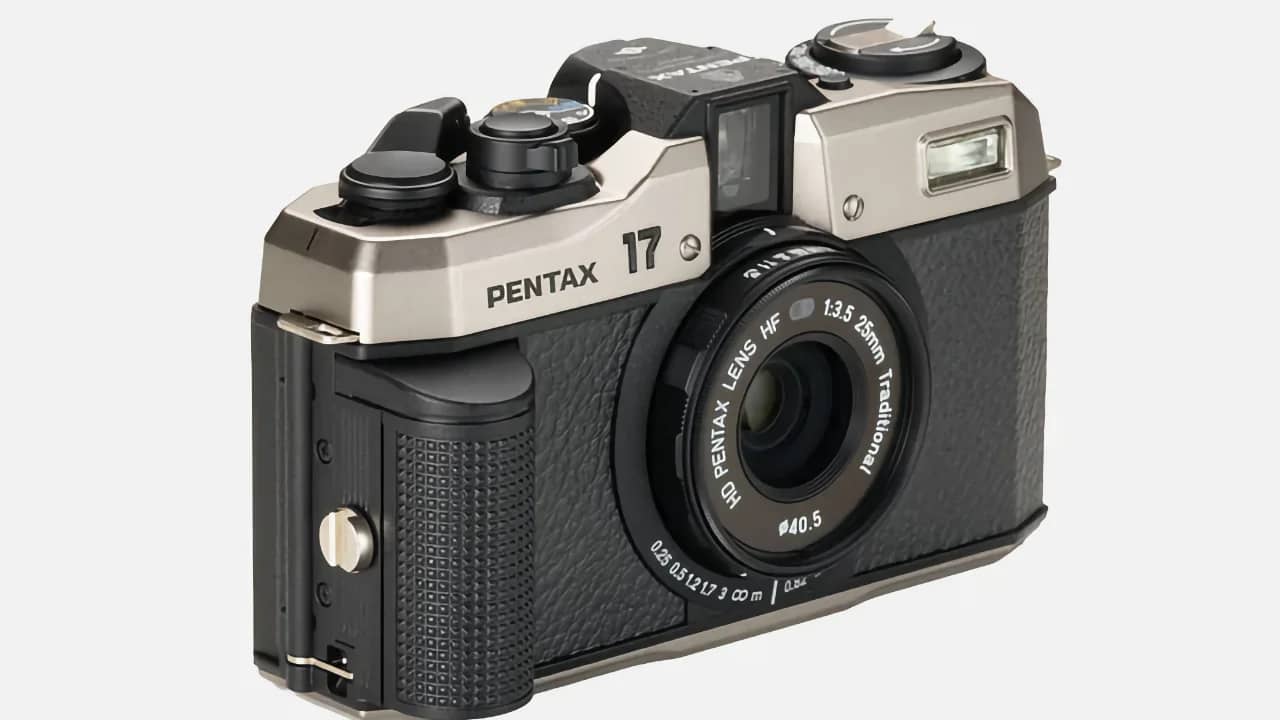
A year and a half after Pentax launched its Film Camera project, the Pentax 17 arrives, a $499 half-frame, fixed-lens camera that captures two 17mm x 24mm pictures within a single 35mm-format frame.
The new Pentax 17 is very much retro technology applied to the digital age. It features a half-size format in which two 17mm x 24mm pictures are captured in a single 35mm-format frame (36mm x 24mm). It also employs a horizontal film advance mechanism so, when positioned in the normal way, it captures vertical-format pictures, identical-ish to the vertical images captured by smartphones (they’re actually a bit taller).
Here are the key highlights:
- Half-size format (17 x 24mm)
• Manual camera operation unique to film cameras
• Newly developed fixed-focal lens combining time-proven optics and
the latest lens coating technology
• Zone-focus system to switch the in-focus area via simple selection of zone marks
• Bright optical viewfinder for real-time confirmation of a subject image
• Seven shooting modes to accommodate different applications
- High-quality body with meticulous attention to every detail
- Built-in Flash
It is pleasingly analog. It features a manual film winding mechanism based on those incorporated in ye olde worlde PENTAX-brand SLR film cameras. The film advance lever lets the user ‘enjoy’ the film winding action (Pentax’s words) and a wind-up sound after every shutter release. It also features other mechanisms unique to film cameras, such as manual film rewinding operation using the rewind crank; exposure compensation via the exposure compensation dial; and ISO sensitivity setting via the ISO sensitivity dial.

The camera’s zone-focus system is divided into six focus zones, indicated by marks that signify each zone. All the user has to do to set the camera’s focus is select the mark best suited for the subject distance on the zone focusing ring. In the Macro focus zone, the user can capture a close-up photo from approximately 25cm / 1ft away. The hand strap (included as a standard accessory) lets the user measure subject distance more accurately.
A newly developed 25mm F3.5 fixed-focal lens (equivalent to a 37mm lens in the 35mm format) is based on the optics incorporated in the company’s Espio Mini (marketed in 1994) and has been redesigned to fit in the half-size format. It is also treated with a multi-layer coating to optimize the clarity and sharpness of half-size pictures. Using the lens used in the RICOH Au-to Half (a best-selling half-size model first marketed in 1962) as a reference, the angle of view and focal length were selected to make casual, everyday picture-taking simple and flawless.
The optical viewfinder features an Albada-type bright frame finder. It also comes with a close-up visual field compensation frame to help you more easily compose close-up images. Users can check the zone marks directly through the viewfinder.
The camera automatically adjusts exposure settings based on the lighting data collected by its metering sensor. In addition to the Full Auto mode in which all exposure settings are selected by the camera, it provides six other shooting modes, including: Slow-speed sync, which is highly useful in twilight photography; and Bulb, which comes in handy for photographing nightscapes and fireworks. It also features an independent exposure compensation dial, which allows the user to swiftly shift the exposure level to accommodate different types of subject or express the user’s creative intentions.
The top and bottom covers are made of a solid but lightweight magnesium alloy to optimize the camera body’s rigidity and bring it in at 290g (10.2oz) without film or battery. The 40.5mm filter mounting thread allows the user to mount a range of filters.
Tags: Production Pentax 35mm


Comments